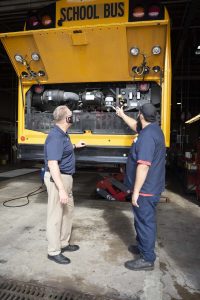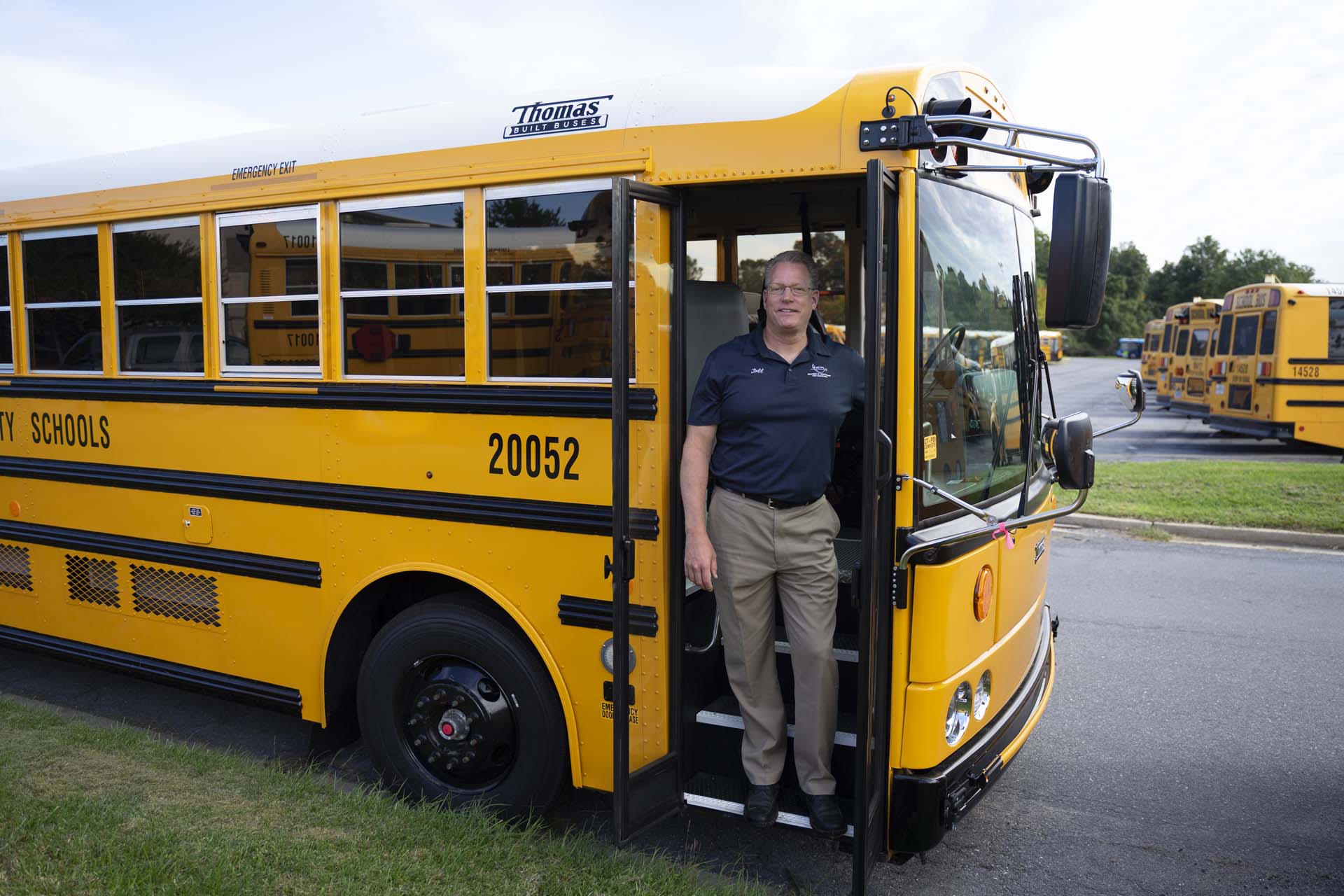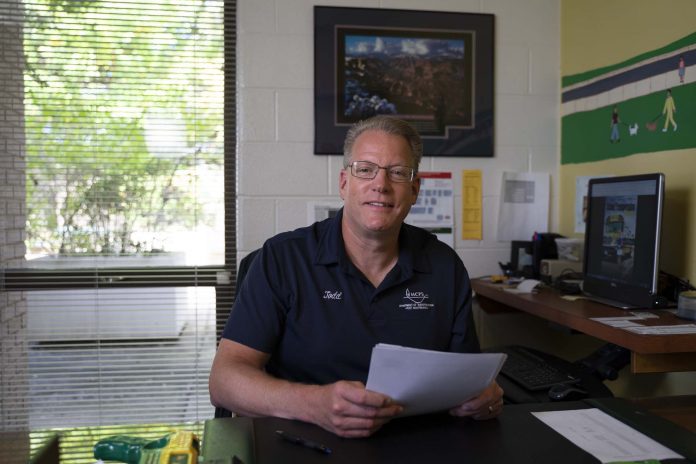Todd Watkins, the transportation director for Montgomery County Public Schools in Rockville, Maryland, and the winner of School Transportation News’ Transportation Director of the Year award for 2020, utilized the pandemic’s “downtime” to update technology and focus on a transportation plan for when MCPS starts to transport students again amid COVID-19.
While the district does remain in a virtual education mode at this writing, only transporting about a dozen students with special needs, Watkins said there are plans in place for when students return to school buses en mass.
He explained MCPS will be following the Centers for Disease Control and Prevention (CDC) guidelines and only allowing 11 students on the bus at one time, to adhere to social distancing practices. He noted that means not everyone all typical student riders will receive transportation services this school year.
“We’re going to start out with our youngest and make sure that we [transport] elementary and middle school and we know that we might have to sacrifice some high school transportation because of the capacity limitations,” Watkins said.
He explained that while some school districts are seating one per child per seat in school buses, MCPS transportation staff found that doesn’t adhere to the six feet of social distancing as outlined by the CDC. He explained that if the students are sitting six feet apart in the classrooms, it only makes sense to make sure they are adhering to those same regulations on the school bus.
“I believe in the consistency of our message, that you can’t do one thing on the bus and then expect [students] to completely change their mindset when they get to the school door,” Watkins said. “But I realize it’s going to have some tremendous logistical challenges.”

While Watkins noted MCPS did experiment with installing barriers between seats to increase student compacity, he said he felt were still sitting too close to each other.
He added that he didn’t want to install a driver barrier either as he doesn’t like the message it sends to parents. “I don’t like the message that a parent sees, ‘Hey, we think protecting the driver with a barrier is important, but not protecting your kid with a barrier.’”
Watkins said that because transportation is already serving four tiers of bell times, there’s not a lot of room to expand with the department’s current resources. He explained that the first run is at 7:45 a.m., and parents don’t have a tolerance for starting school earlier. Plus, he added that students, parents and teachers don’t want to go to school beyond 4 p.m., so additional tiers can’t be added unless the administration wants to shorten the school day.
Watkins said students and school bus drivers will also be required to wear facemasks while on the bus unless a student is unable to as outlined by their individualized education program. In that case, he said the personal protective equipment of the school bus aides and school bus driver assisting that student would be increased, which could consist of gloves and face shields.
Students will also board from back to front in the mornings and unload from front to back in the afternoons to avoid students walking past each other.
In addition to the social distancing practices, MCPS transportation staff will spray disinfectant each evening on all buses. Watkins added that his research indicated that using an electrostatic sprayer was both cost-effective and accomplishes the department’s cleaning goals. In between groups of students, he noted that school bus drivers will be also required to wipe down and spray high touch areas.
Goals for the Future
Watkins said that despite the break in transporting students, he’s trying to look for the silver lining. He said the “downtime” has given him and his team time to update the TripSpark routing software to its newest system.
He said this is the ideal time because, in a normal year, transportation operations are expected to not miss a beat. But he said that right now, nothing is perfect, so if there’s a glitch in the update process it’s more understandable as expectations are low.
Related: School Bus Art Contest Uplifts Student Spirits Amid Coronavirus Pandemic
Related: COVID-19 Adds Challenges to Task of Transporting the Most Vulnerable Passengers
Related: Maryland School District Board Rejects Attempt to Siphon School Bus Funds
Related: Maryland School District Discusses What Sitting Buses Mean for Drivers
Related: ‘Magic School Bus’ Brings School to the Students Amid Virtual Learning
Watkins added that due to the pandemic, the department had its budget cut, so the goal of equipping all 1,378 school buses in the fleet with GPS had to be put on hold. He said the department is working to figure out how to incrementally add the GPS onto the school buses, as he said he believes there will be lots of benefits. For example, student tracking and onboard tablets can be easily utilized with the GPS capabilities.
“In terms of how we serve our customers for the parent app,” Watkins said. “That tells them if their student is on the bus. Some of the calls we get say, ‘Hey, I can watch when my pizza will be delivered to my door, how come you can’t tell me where my kid is?’ I understand that. But we just aren’t there yet, and there’s a pretty big price tag to that. And, we will get there at some point.”
He added that not only will GPS help with student tracking but also with substitute drivers knowing the routes and feeling more comfortable in the driver’s seat.
“I think our subs go through that a lot,” Watkins said. “When we hire people, we try as much as we can to put them on a [set] route. But the reality is, our business doesn’t work that way. And so, they end up going on a route that they’re unfamiliar with.”
He said he is looking forward to the day of having an onboard tablet that syncs with the routing software and provides drivers with that turn-by-turn navigation.

“It doesn’t just take the shortest path to the stop and make it cross streets [drivers] shouldn’t cross,” Watkins said. “It has to be a system that’s integrated and I’m really looking forward to the day we get there. I thought I was going to be this year. But we’re back to incrementally getting there.”
Editor’s Note: Read more about Watkins and MCPS’s transportation operations in the November issue of School Transportation News. Plus, stay tuned for an upcoming podcast featuring Watkins as a guest.














